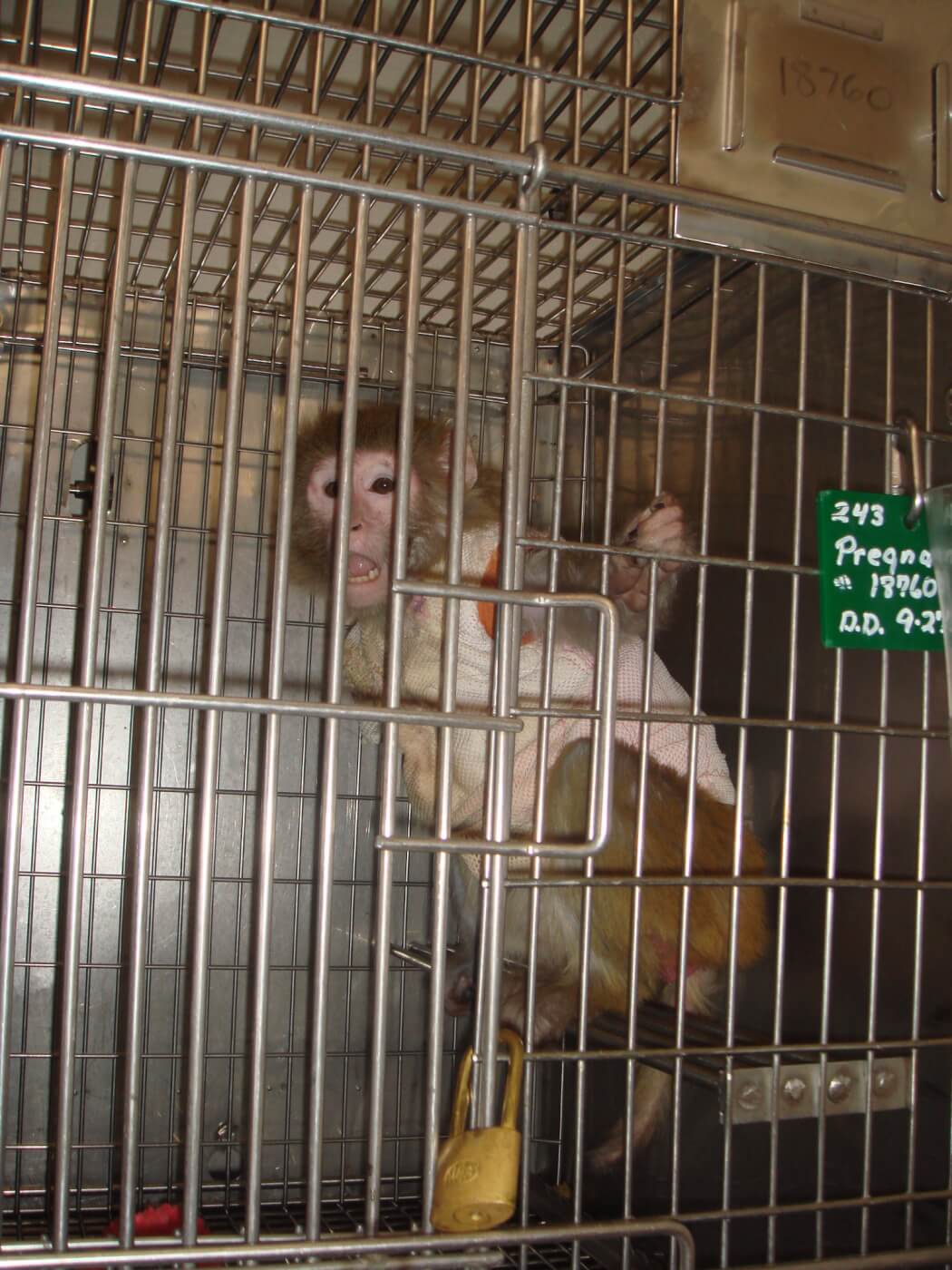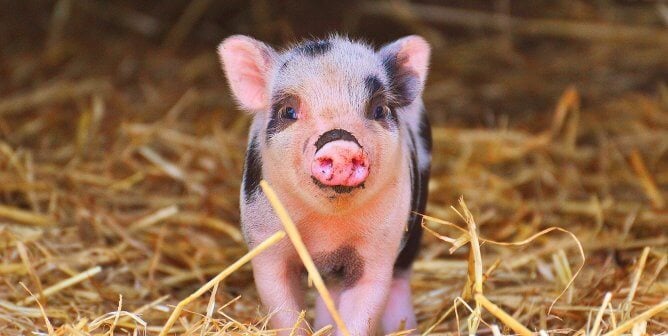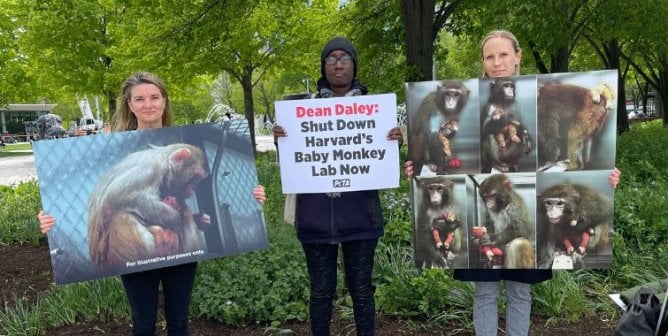Violations of the Federal Animal Welfare Act in the Laboratories of Oregon Health & Science University
Veterinary inspectors at the U.S. Department of Agriculture (USDA) have documented serious and chronic violations of the federal Animal Welfare Act (AWA) in the laboratories of Oregon Health & Science University (OHSU). The AWA stipulates minimum animal welfare standards, but OHSU experimenters have repeatedly failed to comply with these minimal protections for animals. Problems at OHSU have been so systemic that the USDA has issued three official warnings to the university and has twice taken the rare step of fining the institution for its catastrophic failures.
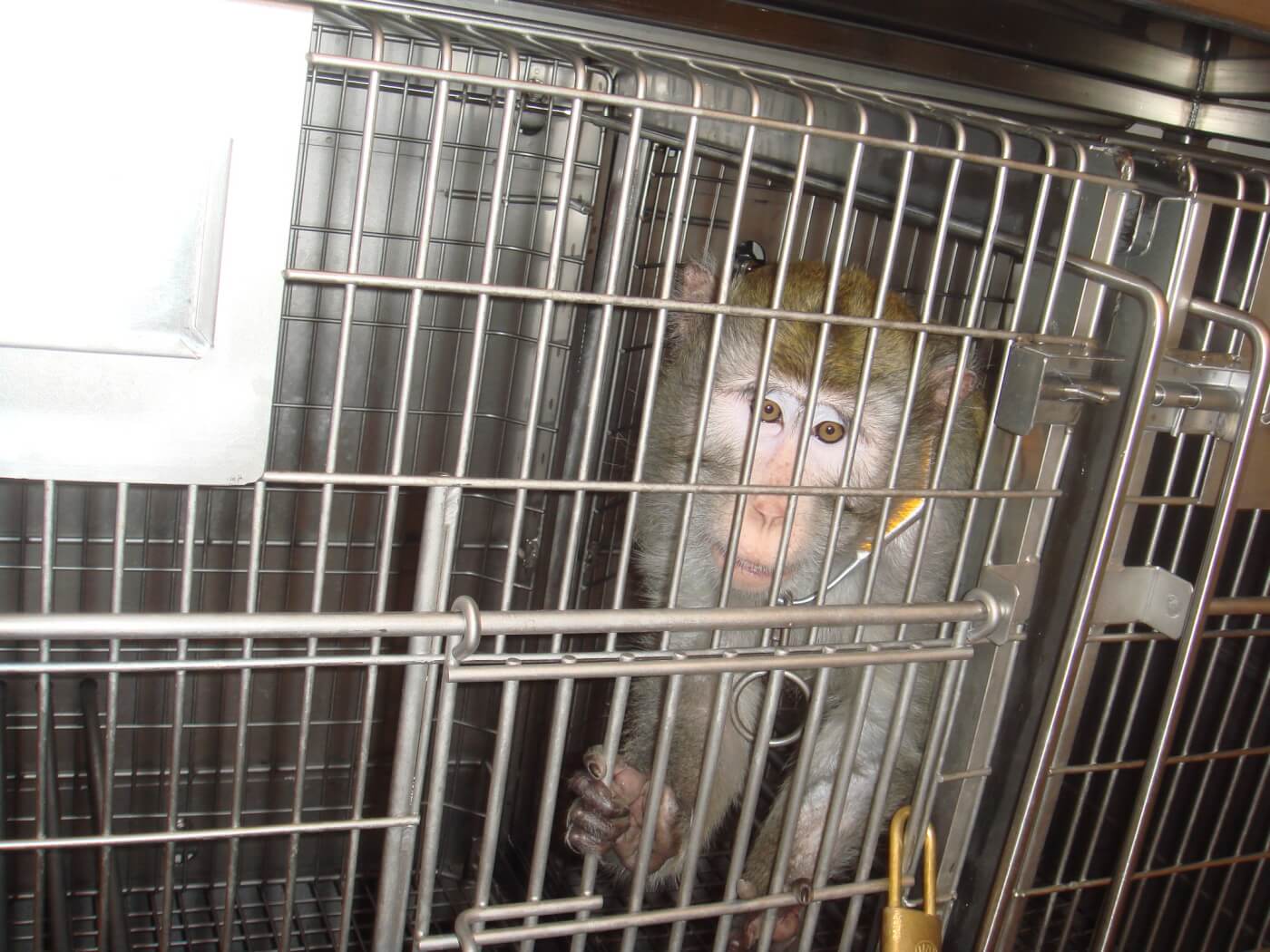
July 19, 2023 (Critical): Thanks to PETA’s complaint, the USDA cited OHSU after an infant monkey was crushed to death in front of her frantic mother. During a transfer from one enclosure to another, a baby monkey sustained fatal injuries when a heavy steel guillotine-style door that had been left unsecured by inattentive OHSU staff crashed down on the infant while her distraught mother watched. The baby was euthanized shortly after. In a statement, the university called the incident an “accident.”
October 4, 2022 (Citation and Notification of Penalty): OHSU was fined $37,900 for nine serious violations of the AWA from February 2018 to February 2022. Two monkeys died after their cage was put through the wash cycle of a high-temperature automatic cage washer with the animals left inside. A juvenile monkey became trapped under a stainless-steel trough drain cover that workers failed to secure properly and had to be treated for partial paralysis and poor muscle control. Two monkeys fought and required treatment for lacerations and abrasions after experimenters failed to ensure that the panel separating them was properly secured. After experimenters cut into marmosets’ heads and removed a portion of their skulls, two of the monkeys developed infections. The experimenters failed to inform veterinary staff in a timely manner, and the animals had to be euthanized. After a monkey became trapped between two PVC pipes, he was freed but later developed neurological signs of trauma and was euthanized. A monkey sustained an injury to his tail when he was transferred from one enclosure to another, and his tail had to be amputated.
February 8, 2022 (Critical): Two male rhesus macaques fought and required treatment for lacerations and abrasions after experimenters failed to ensure that the panel separating the monkeys was properly secured.
December 6, 2021 (Critical): Five gerbils were not given their daily food ration because a verbal request for services by a laboratory staff member to the husbandry supervisor was not communicated to the husbandry technician responsible for feeding in the room. Despite immediate feeding and treatment after the error was discovered, one animal died.
January 25, 2021 (Critical): Two rhesus macaques died after their cage was put through a high-temperature automatic cage washer with the monkeys trapped inside. Also, five rhesus macaques sustained injuries after two stressed males escaped their enclosures and fought with other monkeys. A juvenile macaque became trapped under a stainless-steel trough drain cover after workers failed to properly secure it. The monkey had to be treated for partial paralysis and poor muscle control.
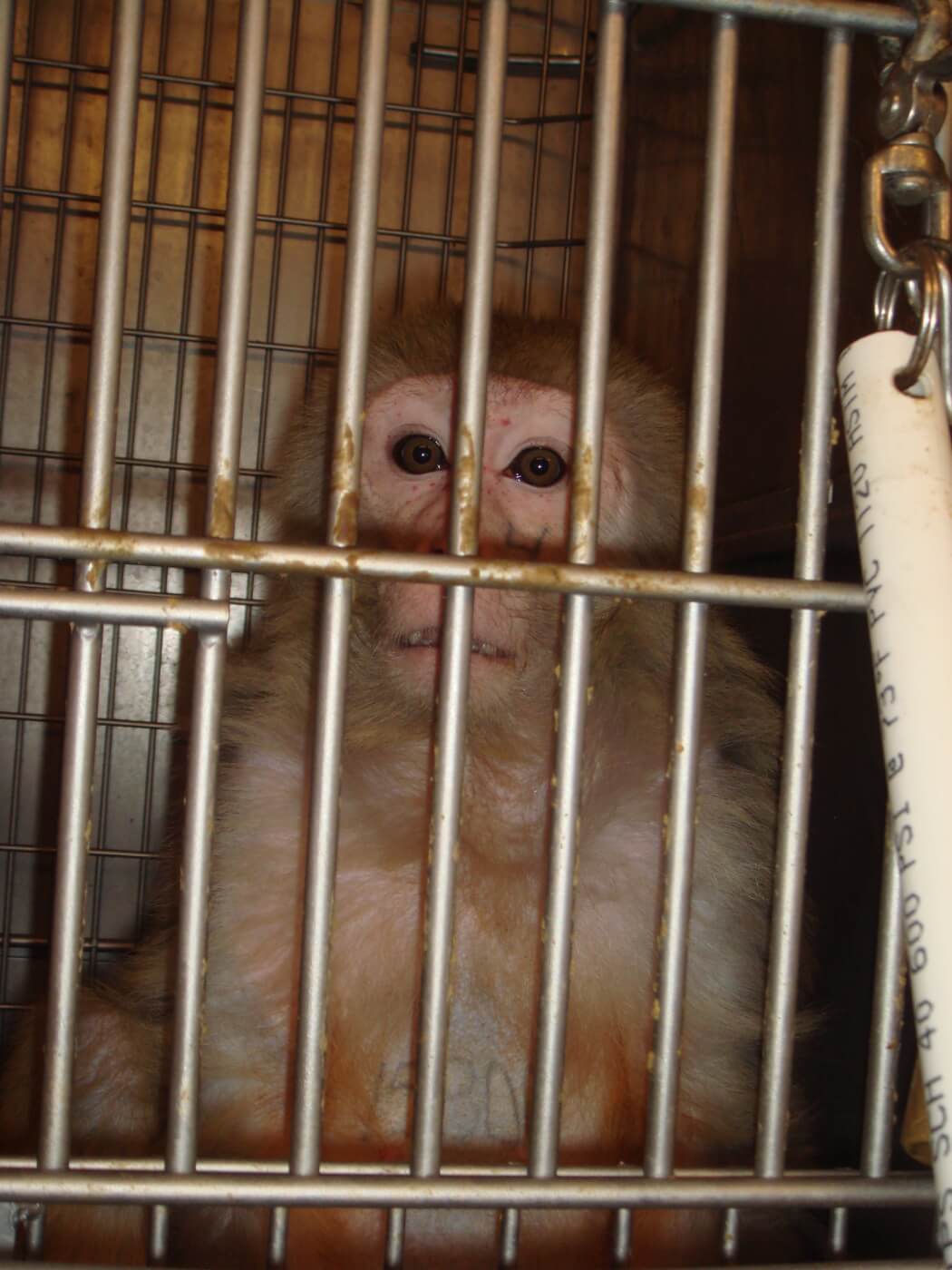
December 15, 2020 (Critical, Repeat): Two marmosets developed infections from an intracranial abscess following a craniotomy and had to be euthanized.
January 21, 2020 (Critical, Repeat): Experimenters failed to use aseptic techniques while conducting survival brain surgery on a ferret involving an open craniotomy chamber in which the brain was exposed. Also, five prairie voles died from dehydration after employees failed to provide them with water. Lastly, exceptions to the AWA that had been approved by OHSU’s Institutional Animal Care and Use Committee (IACUC) were not included in the annual report.
June 3, 2019: Experimenters failed to use aseptic techniques while conducting surgery on a ferret, and the animal had to be euthanized due to “unexpected anatomical complications.” In the same lab, containers of dressing supplies used to clean the head caps (the coverings over a craniotomy—a procedure in which a portion of the skull is removed) placed over the craniotomy area were seen to be dirty and with large areas of corrosion on the lids and under the lid, further jeopardizing maintenance of a sterile facility for conducting surgery. A ferret was found in a restraint for training and cap care. The ferret had a strong foul odor and the cap margins were moist with crust exudate, suggesting an infection of the area. A second ferret was rubbing his or her head cap on some fabric in the cage, suggesting that the cap was causing discomfort. Neither of these issues had been reported to the veterinarian.
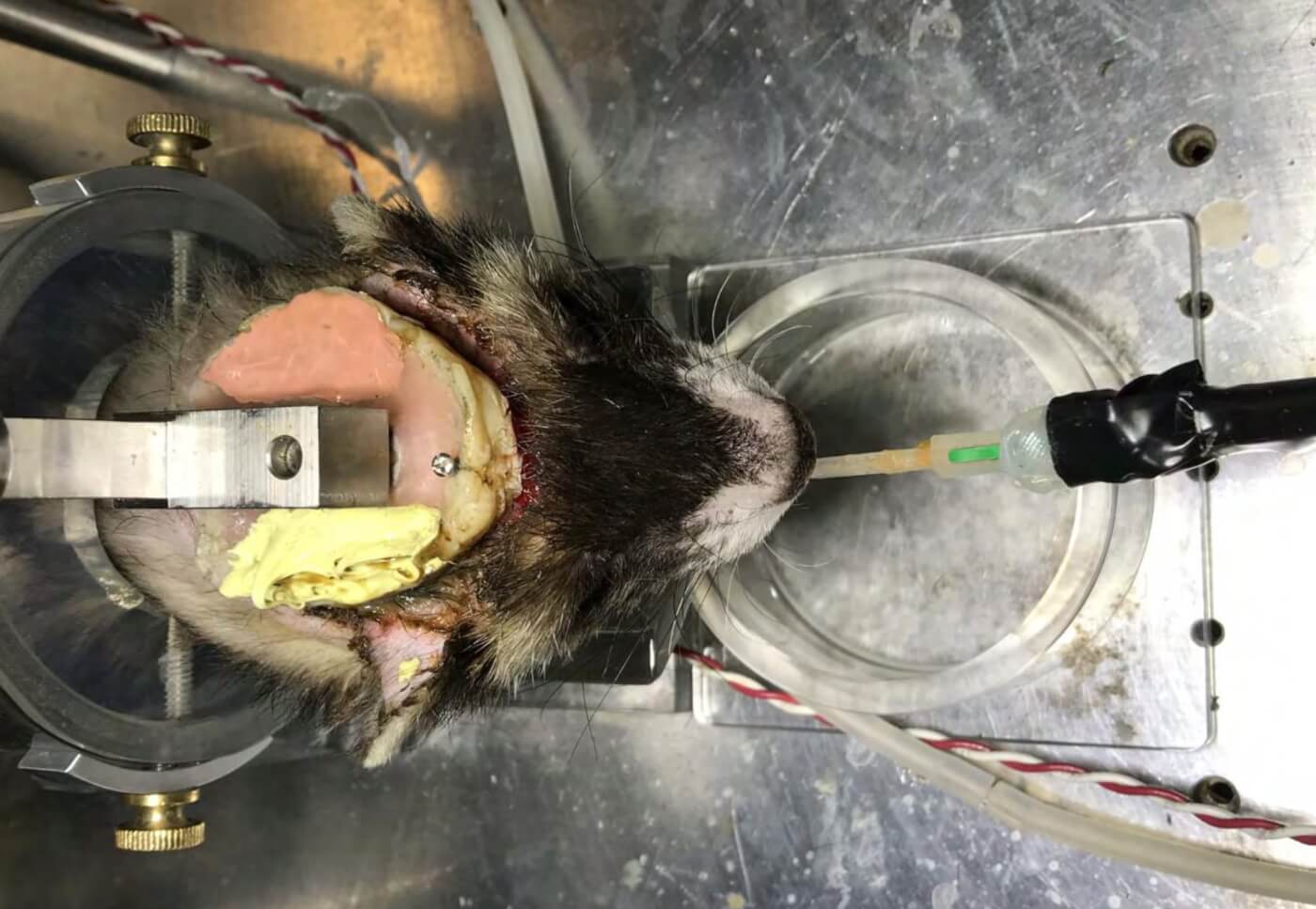
August 6, 2018 (Critical): A monkey who had been used in an experimental surgery did not receive the analgesia or antibiotic that was prescribed for the morning following the surgery. Another monkey became trapped by the PVC pipes of a resting perch. The primate was freed and at first responded to treatment but later exhibited signs of neurological trauma and was euthanized.
July 19, 2018 (Critical): Two guinea pigs died following a procedure after experimenters failed to monitor the administration of anesthetics to the animals adequately. A 4-month-old guinea pig injured his or her leg in the perforated floor of a cage. The animal failed to respond to treatment and was euthanized. Female marmosets were found to have been left without water overnight, and a ferret went without water for 24 hours due to staff miscommunication. During the inspection, the inspectors reviewed the October 2017 IACUC minutes, in which it was reported that a guinea pig was injured when his or her leg became trapped in a damaged igloo. The animal was euthanized.
February 5, 2018 (Critical): A monkey was erroneously assigned to a second study involving a major operative procedure. The animal was subjected to a C-section in one study and an embryo transfer procedure in the other. Another monkey sustained a degloving injury to his tail when he was transferred from one enclosure to another. The monkey’s tail became caught in a gap between the enclosures and had to be amputated. During a group release from a catch area following processing, a juvenile monkey was able to get, unnoticed, behind the wall-hung cages, where he became entrapped and died.
February 14, 2017 (Critical, Repeat): An experimenter administered an off-study drug to five animals. Experimenters failed to clean monkeys’ head caps weekly as required by the protocol. Two monkeys were found unresponsive one morning, and one had to be euthanized. It was determined that the animals were accidentally given the wrong dose of insulin. A baboon was found to have a fractured hand. It was determined that it had likely been injured by the heavy guillotine door.
February 26, 2016 (Official Warning): The USDA issued OHSU an official warning for its failure to ensure that primary enclosures were “constructed and maintained so that they protect nonhuman primates from injury.”
January 14, 2016: A monkey died after becoming entrapped in a chain that was securing an “enrichment” device.
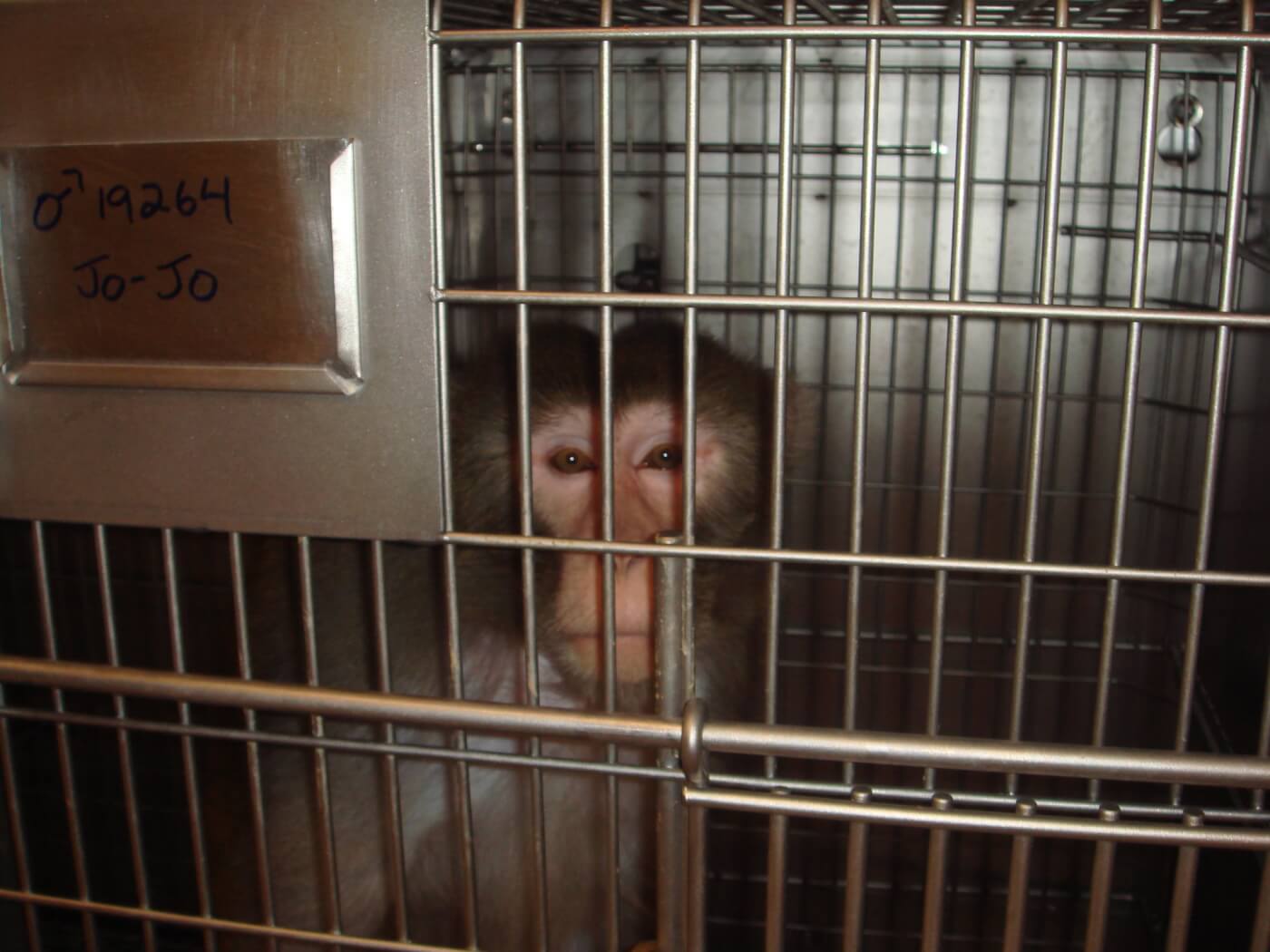
March 24, 2015: A macaque was found to have necrotic lesions at three of six subcutaneous injection sites of an experimental substance. The animal was only supposed to receive a single intramuscular injection. Also, the injection sites were not shaved as required by the protocol. The incident resulted in injury to the animal and delay in evaluation and treatment.
July 29, 2014: Two animals sustained burns from an electric heating pad used during a procedure. They were treated by the veterinarian.
August 6, 2014 (Official Warning): The USDA issued OHSU an official warning for “failure to establish and maintain programs of adequate veterinary care that include use of appropriate methods to prevent, control, diagnose, and treat diseases and injuries.”
April 2, 2014: A female Japanese macaque monkey undergoing an imaging procedure under anesthesia was noted to be in respiratory distress. She died in spite of resuscitation efforts. It was found that the valve on the anesthesia machine had been left closed. Also, 21 rhesus macaques were hospitalized and six animals died or were euthanized as a result of injuries sustained through fighting. It’s believed that noise and vibration from nearby construction triggered the aggression.
May 8, 2012 (Citation and Notification of Penalty): OHSU was fined $11,679 for repeated violations of the AWA, including the escape of nine monkeys from the facility and various incidents involving the deaths of five other monkeys as a result of dehydration, being injected with unapproved compounds, or improper procedures performed by an inadequately trained employee.
December 2, 2008 (Official Warning): The USDA issued OHSU an official warning for failings in its veterinary care programs. In one incident, experimenters left a surgical sponge inside a baboon during an experimental surgery. The baboon exhibited weight loss and was believed to have an abdominal mass. It was only when the animal was killed and necropsied that the sponge was discovered. In a second incident, a monkey endured an agonizing death from sepsis following “prolonged labor and fetal demise.” The experimenter failed to “recognize the signs of distress” and failed to inform the veterinarian of the monkey’s condition. In a third incident, experimenters performed a laparoscopy on the wrong monkey.
